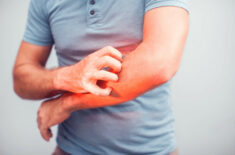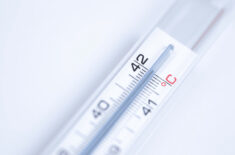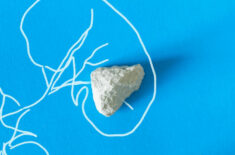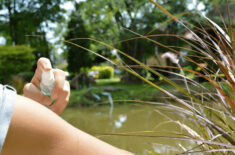Overview
The head louse (pediculidae, pediculus humanus capitis) is a wingless parasite that spends its entire life feeding off small amounts of blood on the human scalp.
Lice can’t fly or walk on the ground, so they can only survive away from the host’s scalp for 24-48 hours.
Lice eggs (nits) are more challenging to detect than adult lice because they’re much smaller.
Lice infestations are common among school children, although lice don’t carry diseases or pose a significant danger.
Typical lice treatment recommended by the CDC (Center for Disease Control) involves combing thoroughly and using insecticidal lice shampoo.
Pyrethrin and piperonyl butoxide shampoo are commonly used.
People may prefer to explore more chemical-free, deet-free, natural routes before using such harsh shampoos, especially on children.
Some experts suggest that the use of essential oils and other natural remedies may help with head lice.
Can Essential Oils Kill Lice?
There are conflicting accounts on whether or not essential oils effectively treat and prevent head lice infestations.
There currently isn’t enough large-scale evidence to support this claim, although some research does seem promising.
Several essential oils like tea tree oil (melaleuca alternifolia), peppermint, neem, cinnamon, nutmeg, rosemary, and lavender appear to be useful for treatment and lice prevention according to several limited studies.
It’s believed certain essential oil active compounds like phenols and 1,8-cineole may be toxic to lice and act as a repellent for other insects and critters like bed bugs, fleas, mosquitos, and spiders.
A randomized controlled trial published in BMC Dermatology found that tea tree and lavender oil may be more effective than chemicals like pyrethrins, which is a common ingredient in lice shampoos.
This study was of a sample size of 123 children, so more studies are needed to confirm the findings.
How To Use Essential Oils For The Treatment of Head Lice
There are several ways you can use essential oils for head lice management.
Try them out and see if they work for you or your children.
Please note that certain essential oils like peppermint are not suitable for young children or pregnant or nursing women.
Consult with your healthcare provider or pediatrician before using any essential oil.
Here are some options if you decide to proceed with using oils for lice:
- Create a hair rinse mixture using water, vinegar, alcohol, and essential oils. (Use 1-1.5 cups of water, ⅓ cup of vinegar, ¼ cup 90% isopropyl alcohol, and 5 drops of tea tree oil, 5 drops peppermint oil*, 5 drops rosemary oil, 5 drops lemon oil, 5 drops lavender oil.)
- Create an oil mask to ‘drown’ lice using a carrier oil like fractionated coconut oil or olive oil. (Use ⅓ cup of oil and 5 drops of tea tree oil, 5 drops peppermint oil*, 5 drops rosemary oil, 5 drops lemon oil, 5 drops lavender oil.
- Squirt your shampoo or conditioner on your palm and 7-10 drops of tea tree or another essential oil and lather thoroughly.
- Separate hair into small sections and thoroughly comb each area using an effective comb like the Terminator Nit-Free comb.
* Substitute peppermint oil for lavender oil if you’re using it on a child younger than 3 years old.
Safety Concerns
When used mindfully and with care, EOs offer little to no side effects.
Make sure you’re using 100% pure essential oil that is undiluted and certified organic.
This ensures the highest potency and can also protect you against potentially harmful chemicals and solvents.
The FDA (Food & Drug Administration) doesn’t regulate essential oils, so you’ll have to do your research on which brands offer the highest quality.
Some oils might not be suitable for young children, pregnant, or nursing mothers, so be sure to check contraindications first.
Tea tree and other oils might cause skin irritation or allergic reactions, so perform a patch test before applying to the scalp and wait 24 hours for a response.
If you or your child experience an adverse reaction to any oil, discontinue use immediately.
Tips For How To Get Rid Of Or Prevent Head Lice Infestations
- Sanitize the lice comb after every use – boil it in water for 12 minutes, soak it in a bleach solution, or use 90% rubbing alcohol after every use.
- Wet combing – combing with damp hair can be more effective because it makes the lice more visible and helps distinguish them from dandruff, dust, and other smaller particles.
- Steam and sanitize pillowcases and towels after every use – Use your washer’s steam/sanitize setting and make sure you don’t reuse these.
- Thoroughly rinse your comb with hot water – Do this after every stroke, so you don’t reintroduce lice or nits back into your scalp or hair.
- Use an electric comb – An electric comb will electrocute the adult lice and help eliminate nits.
- Avoid direct head contact – According to the CDC: “Head lice are spread most commonly by direct contact with the hair of an infested person. Spread by contact with inanimate objects and personal belongings may occur but it is very uncommon. Head lice feet are specially adapted for holding onto human hair.”












